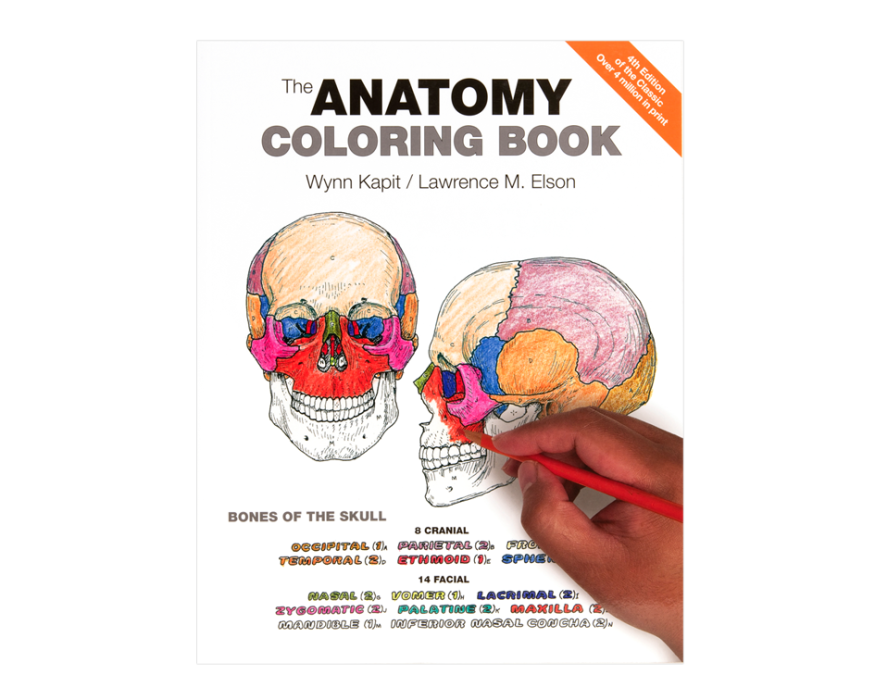In classrooms and lecture halls around the world, there's a silent pattern that keeps resurfacing. Students are struggling, not because they lack talent or dedication, but because the way knowledge is taught hasn't often kept pace with how students can learn effectively. From children labeled inattentive to medical students buried under memorization, too many get left behind by systems that mistake conformity for comprehension.
Rigid education systems tend to demand that students sit, listen, and repeat. Yet research consistently shows that retention soars when learning involves more than passive intake. This is where kinesthetic learning, the practice of engaging the body to anchor the mind, steps in. While this is not a new concept, it's one that has been undervalued, with a potential that is undeniably vast.

Coloring, something that's often dismissed as child's play, is one of the most surprising and effective methods of kinesthetic learning, posing as a powerful tool for focus and memory. For Ellyn Elson, CEO of Coloring Concepts, the discovery of its impact was life-changing. "What if the reason a child cannot wrap their head around a subject is not because they are failing," she points out, "but because the system is failing them?"
This perspective reframes the narrative. Learners are not inefficient, but the tools they are given might be.
Elson believes that the act of coloring provides an alternative, and science agrees. Studies show that hands-on learning strategies reduce failure rates in STEM courses and significantly improve conceptual understanding.
For students with ADHD, PTSD, ADD, and related conditions, coloring can do even more. It can slow down racing thoughts, steady the heart, and foster the calm needed to absorb and retain information. As Elson explains, "When they're coloring, their brain is focusing on something. And when they're focusing, it slows the mind and heart down."
Her insight is backed by neurocognitive logic. She points out that when learners physically trace or render the word and image of an anatomical structure, such as coloring the word "artery" before shading the vessel, the retention boost could be striking. "The retention rate might be close to 70% better when you are involved kinesthetically," she states.

This philosophy is at the heart of Coloring Concepts, the company she now leads. Founded on her late husband's vision, it pioneered anatomy coloring books that merge narrative detail with physical engagement. Using distinctive bubble lettering, the books enable learners to color the word itself before filling in the structure, helping them to make the association quickly. "Once they've colored the word, and then colored the structure, they won't forget where it belongs," Elson explains. What may look simple on the surface actually unites language, vision, and motion in a single act, transforming study into discovery.
The reach has grown far beyond medical schools. The library has expanded into zoology and art history, attracting lifelong learners as well. "We started with medical students," Elson recalls, "and then we added physical therapists, nurses, dentists, massage therapists, ballerinas. It has expanded into this huge market." The common thread is that when people are asked not just to see or hear information but to interact with it, knowledge sticks.
What makes coloring remarkable is its accessibility. Like robotics in STEM programs, it is hands-on and experiential. Yet unlike costly labs or equipment, it requires only a book and pencils. "Even though robotics has become very important, coloring is another genre of that same ability to learn," Elson says. "And coloring is not just for kids, it's for adults. It slows your brain down, it allows you to be more thoughtful, and it changes the way you absorb knowledge."
Beyond learning outcomes, coloring offers benefits that ripple into mental health and well-being, proving to be effective in calming the brain and reducing stress. In classrooms, it shifts dynamics, replacing frustration with confidence. And in professional training, it makes complex knowledge approachable and memorable. For Elson, that impact is the reason she continues her late husband's work. She shares, "It changes the dynamic of the classroom. It changes the dynamic of the futures of so many children. And what's more important than that?"

Education does not need to fail or be complicated for those it is meant to serve. Children and students don't have to struggle with something that is their prerogative, and parents don't have to endure confusion and frustration in helping them navigate through traditional education systems that often work against them.
Embracing kinesthetic methods like coloring can allow the act of learning to be transformed, turning knowledge into something not only understood, but remembered, embodied, and moreover, enjoyed. The future of education may well depend on it.
© 2025 ScienceTimes.com All rights reserved. Do not reproduce without permission. The window to the world of Science Times.












